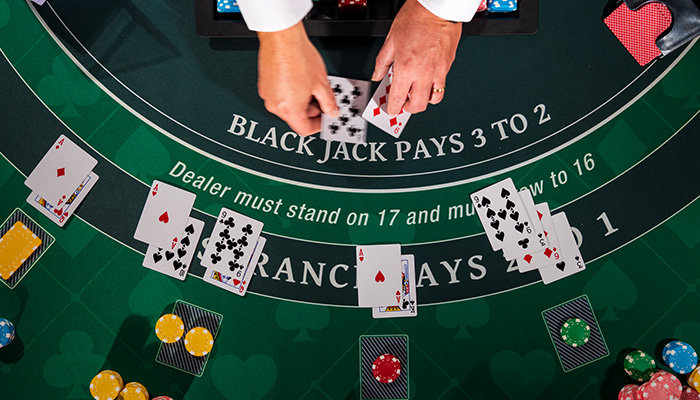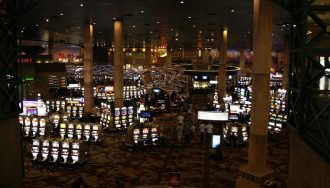Famous Card Counters of Yesterday and Today
 Famous Card Counters
Famous Card Counters
Card counters are famous for their exploits in casinos around the globe, where they try to turn their skill and knowledge into cold, hard cash. Famous card counters are not always the best card counters, as notoriety isn’t always a welcome byproduct of beating the house. But those who have beaten the casino and then went on to write books or explain their systems have become very famous indeed.
Famous Card Counters Through the Decades
Card counters need many things to go in their favor if they are to sneak by the security cameras and pit bosses and ply their trade undetected. We will quickly examine what it takes to be a successful counter. We will introduce you to some of the founding fathers of both the art and science that goes into being a professional card counter, as well as some of the card counters still practicing the trade today.
- 🔥Famous Card Counters
- 🔥The Best Card Counters
- 🔥Todays Famous Card Counters
- 🔥A New Breed of Counter
- 🔥Conclusion
Famous Card Counters
Card counting for a living requires a particular set of skills. Card counters need to be quick with math, not necessarily a genius at it. There’s no calculus or anything much more than some quick addition, subtraction, and a bit of dividing mixed in with just a dash of multiplication when it comes to card counting at a real live high-stakes blackjack table. While you can certainly get a feel for the game playing a couple of dollars a hand of online blackjack somewhere, you are going to need a bit more experience with the real tension of a pit boss standing there watching you or a dealer hollering out chips in action before while running that deck down before you are ready to play.
A professional counter must be disciplined and confident, playing each hand precisely according to the mathematical model. They will also need to keep track of each card as it is dealt, all while making a bit of small talk with the dealer and the other players to cast off suspicions. Must also be able to make the required bet despite all the diversions around them when the time comes.
Card counters will need patience, as even in the old days before facial recognition and Be On the Look Out emails, casinos were wary of people moving their money with the count. Casinos hire people who can count just as well as the best card counters, and they just need to catch you once to burn you. The card counters have to get away with it a thousand times. So slow and steady will have to do.
Despite the job requirements, the one thing that all of these people have in common is that most of the genuinely famous card counters became famous by attacking the problem from a new angle. They relentlessly pursued the casino’s money, and every last one of them was determined to burn down the house.
The Best Card Counters
Our story begins in the early 1960s when Edward O Thorp is running loose in Las Vegas and Reno with a computer-derived count system that is beating Blackjack. While Thorp may be one of the most famous card counters and is undoubtedly one of the earliest, much of his computer programming and even the ideas about card depletion affecting the house edge were taken from others. Still, his seminal book Beat the Dealer would forever change how the general public viewed blackjack as a beatable game.
Other early researchers into the mathematics of the game included players like Lawrence Revere, who was both a famous author of blackjack books and had devised his own point strategy. He also worked as a pit boss for some major Vegas casinos.
Stanford Wong was a player first and an author and scholar second. He would become world-renowned for Wonging, simply a technique of standing back and counting down a game from a distance. He would only move into the game when the count went positive. With some modification, this technique would win the MIT team millions in another decade or so. Like many early 1970s professional players, he had a strong anti-establishment attitude, which you can read in some of his early works.
And no discussion of the 1970s players/authors would be complete without a mention of professional card counter Ken Uston. Uston was a storyteller, and people who played on his teams have disputed some of the details on several occasions. Still, Ken’s 1977 book The Big Player and his follow-up Million Dollar Blackjack changed how the game was played.
While not Ken’s original idea, he became involved with teams that had taken Wong’s idea about only playing positive shoes to heart. Instead of single players wonging in and out, they would put a half dozen counters flat betting table minimums on different tables that would signal in a big player when the count went positive.
This means the big player only makes big bets, no moving with the count, which brings much less heat; it also means that every bet has an advantage and that these bets could be at the table maximum turbocharged the teams’ earnings. This is the same exact method used by the MIT blackjack team and countless others a decade or so later.
Many other great authors and players of the time helped develop new mathematical concepts, count strategies, and index deviation strategies, as well as times when you should play your hands differently, like Arnold Snyder and Lawrence Revere.
Tommy Hyland led successful teams for decades and mastered the art of shuffle tracking, which involved watching large clumps of high or low cards through the shuffle and then either cutting them into or out of play, and ace sequencing, which involved tracking aces through the shuffle and either cutting to or steering play so that they fell to a particular player.
Today’s Famous Card Counters
While much of the seminal math and gameplay concepts were completed more than 50 years ago, some famous counters are still playing today.
James Grosjean is potentially the most famous player still in action today. Although his book Beyond Counting came out almost two decades ago, many will tell you it’s the most important book since Beat the Dealer in the world of card counting.
He has mastered many other games and side bets besides Blackjack. He has used grey area techniques like catching the dealer hole card in games like Three Card Poker and Mississippi Stud to make millions. Still, his most impressive feat has been staying unidentified and able to continue playing this long.
Colin Jones and David Drury were part of a church-based card-counting team that purportedly won a sizable amount from 2005 to 2010. This group didn’t use elaborate Big Player techniques or deceptions to win; they were just lone players playing off a shared bankroll, with the occasional blackjack skill test and a lot of faith in each other’s record keeping.
Colin now runs Blackjack apprenticeship, probably the world’s foremost Blackjack card counting training program, and David does much of the teaching and, more importantly, handles the PR.
A New Breed of Card Counter
While not the household name he should be, Don Johnson is one of the premier players in the world today. This is not because he grinds out long hours at tables with hundreds of disguises. Nope, Don never had to worry about getting kicked out of casinos because the top names in Atlantic City and Las Vegas used to beg him to play.
Though if they knew then what they know now, perhaps they would have stuck with just letting Don Johnson play online blackjack in New Jersey instead of letting him run amuck against their dealers.
While Don used card counting as part of his arsenal, his biggest asset was his bankroll. Casinos throw comps at big players; they are always looking for what the industry terms a cheap date. Someone who they only have to buy a fancy dinner and a suite on the top floor to get them to drop 200k. But Don was not a cheap date, and he would only show up with his million-dollar credit line if he got a discount.
If the casino really wants you to show up, it will often give you free play or free jet service, but serious players want a discount on their losses. If the player loses a million, he only has to repay 800k and has 30 days to do it. And when you are dealing with most players, that works, but with Don Johnson, it didn’t.
Don Johnson plays perfect basic strategy. He distracts the dealers with a huge party entourage that can at times include porn stars and strippers, hoping to induce a mistake or two every hour that he can exploit to his advantage. And while he doesn’t move his bets like a true counter would, he may set out negative shoes. But most importantly because he knows the math on the discount he knows exactly when he should walk away when losing this trip and when he should let his winnings run. He knew that with the rules the casino gave him, the rules on the discount, and the proper win and loss points set by computer modeling he had the advantage before he ever sat down. He used these tricks to beat Atlantic City alone for more than 15 million before they realized the error of their ways.
Conclusion
While much of the advantage that early counters could get from innovative play and groundbreaking new techniques has faded over the years, those famous card counters from the 1960s and 1970s will likely never be forgotten.
Today’s card counters have developed new and varied techniques to stay under the casino’s radar, but time will tell how long they will continue to work. In the meantime, we turn to the next frontier, the online legal blackjack sites in the US. Traditional card counting is believed to be impossible online, but people had believed traditional blackjack couldn’t be beaten til it was. It will be interesting to see what the new generation of card counters can do.




